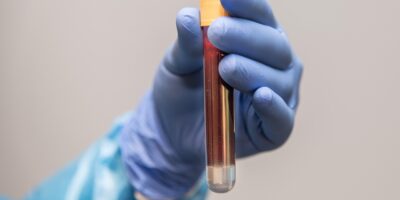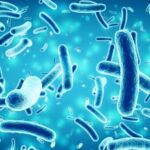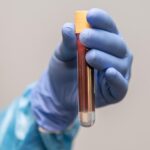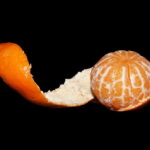The worst fear for the mind of a scientist is decay. Unpreventable but ever-encroaching, it is an imminent reminder of our mortality that pulls us aside from our intellectual pondering beyond one’s deepest and wildest imagination. This theme is often portrayed in TV shows as the “stubborn old scientist,” an once genius who lost their spark with the flow of time.
Cognitive decline is the process where, as we age, an increased number of neuronal stem cells become unable to transition from a stage where they are inactive to proliferation, a stage defined when cells divide and multiply while actively going through the cell cycle. This means that the older we become, the more difficult it is for neurons to be produced and for neuronal populations to regenerate themselves.
Neural stem cells
Neurons regenerate with neuronal stem cells, or NSCs for short, and the inactivation of these stem cells is dependent on glucose uptake. As one ages, glucose uptake for these NSCs increases, causing these cells to become inactivated via the the GLUT4 transporter. The inactivation of these cells causes the inability for neurons to regenerate effectively due to being unable to transition to a stage where they can divide and multiply, and thus leads to a decrease in neurogenesis in older organisms. While prior research suggested that glucose metabolism played a significant role in NSCs and aging, they only aimed to target individual genes or specific pathways, currently there is a lacking in a systematic approach to identify multiple gene knockout that could improve the activation of NSCs in aging. This study is unique as it conducts a whole genome wide approach to identify the specific gene knockouts that would affect NSCs activation with the hypothesis being that a genome wide CRISPR-Cas9 screen could potentially reveal certain gene knockout that would restore the activation of NSC in older mice, possibility identifying key genetic interventions which may assist in regenerative decline.
In this study, scientists conducted extensive genome-wide screening of over 23,000 genes to find which genes they could inactivate to improve neurogenesis in older organisms, discovering over 300 gene knock outs which may restore the activation of NSC. They also found 24 compounds that boosted NSC activation in the actual testing. Out of all the genes tested, the top one was found to be the gene that encodes the glucose transporter, which, when removed, improves the function of old NSCs by reducing their uptake of glucose.
What did the scientists do?
For the methods, CRISPR-Cas9 genome-wide knockout screening was used. This method is a way to break off the genes inside the stem cells. By doing so, scientists can find which genes would affect the activation of NSCs. Think of it like a giant Lego model with thousands of pieces. You want to find out which are necessary for it to stand. To do so, you remove pieces one at a time and see if it still works. Instead of Legos, for this one it’s removing the genes to see which would make NSCs reduce their uptake of glucose.
Once the genes that upon removal, help NSCs regain their ability to activate had been discovered, lentiviral transduction was applied. This is when the lentiviral viruses used to deliver CRISPR guide RNAs come in. These viruses deliver CRISPR guide RNAs into the NSCs to induce the gene knockouts in vitro and in vivo, making targeted gene editing possible. You can think of the lentiviral transduction like a tiny mailman delivering special instructions for a list of items to throw out. In this case CRISPR guide RNAs are the instructions of what to throw out and the mailman is the lentiviral transduction viruses.
Fluorescence-activated cell sorting was then used to sort and analyze the NSCs based on their activity. They did this by detecting markers like the Ki67, allowing the researchers to see how well the NSCs were activating once the gene knockouts had been done. Another way to think of this is as if you were throwing a big party and only wanted to invite people who are smiling, so to do so, you sort the people who are smiling and not smiling are into different groups. For this study, a laser was shone on cells which were tagged with a glow that indicated if the cells were active. Which in turn, allowed the researchers sort out the active and inactive cells so they could see if the gene knockout had an affect.
High-throughput sequencing was then used by the researchers as a method to confirm which genes were successfully knocked out during CRISPR-Cas9 screens and allowed the researchers to assess the consistency of the screen across different sample. This was like finding patterns in a long book but instead of reading it, a super fast scanner is used which reads the whole book at once to tell you exactly where each specific word/phrase are. High-throughput sequencing is similar, where DNA is read at an ultra-high speed and scientists can check which genes were removed and the effects it had.
Immunofluorescence staining and confocal microscopy were then used to see if the protein was expressed in NSCs and the brain, especially for proteins like GLUT4. Confocal microscopy provided high-resolution images for the localization and intensity of the proteins. Think of it like using glow in the dark paint on certain spots of a dark room, you can then turn off the light and see where the spots light up by shining a special flashlight at it. Immunofluorescence paints specific proteins instead of spots, and confocal microscopy then “lights them up” so scientists can see where the proteins are in the cell and the amount present.
Finally, the quantification software, QuPath, was used to quantify the results from immunofluorescence staining. A process which allowed for large-scale, and an unbiased measurement of the protein levels and cell activation in the samples. This is like if you had a huge jar of mixed candies and wanted to know how many red candies are inside. Rather than counting by hand you use an app on your phone that counts the candies in the jar and tells you the exact amount of red candies present. QuPath does a similar thing for cells where images of stained cells are scanned and the glowing proteins/active markers are counted, letting scientists see the exact numbers without having to do it manually.
What does this mean for our future?
Not only do we now have a comprehensive dataset of genes that regulate the function of NSCs during aging, but we also know that the temporary starvation of glucose causes them to activate. This discovery, that glucose uptake is significant in NSC decline as we age, provides major implications for the future of regenerative medicine. Specifically, in targeting GLUT4 in aged NSCs, researchers can potentially combat cognitive and sensory decline, giving a dataset of potential therapeutic targets. This gene knockout was confirmed in vitro to be effective, bringing us a step closer to combatting the decline of cognitive function with aging.
Cover image: pexels-pixabay-34761
Article source: Ruetz, T.J., Pogson, A.N., Kashiwagi, C.M. et al. CRISPR–Cas9 screens reveal regulators of ageing in neural stem cells. Nature 634, 1150–1159 (2024). https://doi.org/10.1038/s41586-024-07972-2








